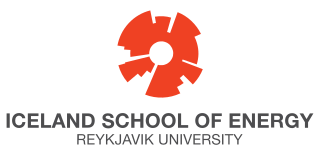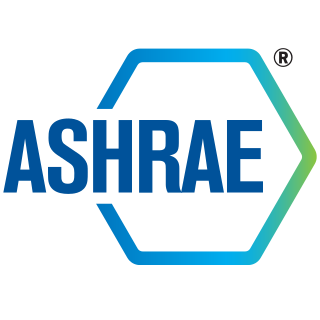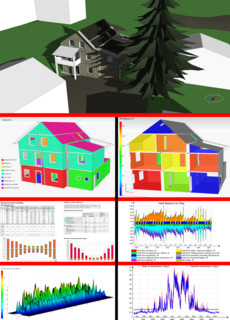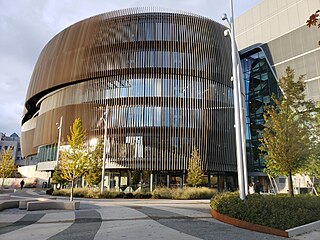Related Research Articles

Heating, ventilation, and air conditioning (HVAC) is the use of various technologies to control the temperature, humidity, and purity of the air in an enclosed space. Its goal is to provide thermal comfort and acceptable indoor air quality. HVAC system design is a subdiscipline of mechanical engineering, based on the principles of thermodynamics, fluid mechanics, and heat transfer. "Refrigeration" is sometimes added to the field's abbreviation as HVAC&R or HVACR, or "ventilation" is dropped, as in HACR.

WSP USA, formerly WSP|Parsons Brinckerhoff and Parsons Brinckerhoff, is a multinational engineering and design firm with approximately 14,000 employees. The firm operates in the fields of strategic consulting, planning, engineering, construction management, energy, infrastructure and community planning. In 2013, the company was named the tenth largest U.S.-based engineering/design firm by Engineering News Record. In 2020, it was ranked #7 of the Top 500 Design Firms and #2 of the Top 100 Pure Designers by the same magazine. On October 31, 2014, Parsons Brinckerhoff became a wholly owned independent subsidiary of WSP Global, a Canadian-based professional services firm. Parsons Brinckerhoff was renamed to WSP|Parsons Brinckerhoff, then to WSP USA in 2017. Together with WSP Global, WSP USA is one of the largest professional services firms in the world, with approximately 31,500 employees in 500 offices serving 39 countries.

Engineering News-Record is an American weekly magazine that provides news, analysis, data and opinion for the construction industry worldwide. It is widely regarded as one of the construction industry's most authoritative publications and is considered by many to be the "bible" of the industry. It is owned by BNP Media.

The City College of the City University of New York is a public college of the City University of New York (CUNY) system in New York City. Founded in 1847, City College was the first free public institution of higher education in the United States. It is the oldest of CUNY's 25 institutions of higher learning, and is considered its flagship college.
Turner Construction is an American construction company with presence in 20 countries. It is a subsidiary of the German company Hochtief. It is the largest domestic contractor in the United States as of 2020, with a revenue of $14.41 billion in 2020.

HDR, Inc. is an employee-owned design firm, specializing in engineering, architecture, environmental, and construction services. HDR has worked on projects in all 50 U.S. states and in 60 countries, including notable projects such as the Hoover Dam Bypass, Fort Belvoir Community Hospital, and Roslin Institute building. The firm employs over 11,000 professionals and represents hundreds of disciplines in various markets. HDR is the 10th largest employee-owned company in the United States with revenues of $2.5 billion in 2021. Engineering News-Record ranked HDR as the 5th largest design firm in the United States in 2022.
The Illuminating Engineering Society (IES), formerly the Illuminating Engineering Society of North America (IESNA), is an industry-backed, not-for-profit, learned society that was founded in New York City on January 10, 1906. The IES's stated mission is "to improve the lighted environment by bringing together those with lighting knowledge and by translating that knowledge into actions that benefit the public".

BESIX Group is a construction group based in Brussels, one of the world's leading international contractors according to the ENR ranking. Active since 1909, BESIX operates in Europe, the Middle East, Oceania, Africa, North America and Asia.

Haskell is an architecture, engineering, construction and consulting firm headquartered in Jacksonville, Florida. It was founded by Preston Haskell in 1965. James O'Leary succeeded Steve Halverson as CEO in August, 2018.
Michels Corporation is a family owned and operated energy and infrastructure construction company. Headquartered in Brownsville, WI, where it was established in 1959, Michels is one of the largest, most diversified contractors in North America. It performs work throughout the world.

The Iceland School of Energy is an international graduate school within the Department of Engineering at Reykjavik University, the largest private university in Iceland. ISE is jointly owned by Reykjavik Energy, Reykjavik University, and Iceland GeoSurvey, and specialises in the fields of Sustainable Energy and Electric Power.
Collins Engineers, Inc. is an ENR Top 500 Design Firm and provides civil, structural, water resources, waterfront, program management and underwater engineering services to government agencies, contractors, and private sector clients. The firm was founded by Thomas J. Collins in April 1979. It is a privately held company with eighteen offices in the United States, United Kingdom, and Ireland. Collins Engineers, Inc. is headquartered in Chicago, Illinois.
Collins Engineers, Inc. was an early advocate for the use of professional engineers as diving inspectors in the evaluation of underwater structures. Using this service, the firm provides underwater engineering services performed by in-house engineer-divers around the world to clients including the United States Navy and state departments of transportation. Collins Engineers, Inc. has also developed reference manuals on the subject for the Federal Highway Administration (FHWA) and National Highway Institute (NHI).
Collins Engineers, Inc. also provides design and analysis services for railroads, waterfront facilities, and transportation structures, as well as site development engineering for commercial and institutional concerns.
In 2006, Collins Engineers, Inc. acquired MacIntosh Engineering and Development Co.. In 2008, Collins Engineers, Inc. acquired Charles Keim & Associates, Inc..

The American Society of Heating, Refrigerating and Air-Conditioning Engineers is an American professional association seeking to advance heating, ventilation, air conditioning and refrigeration (HVAC&R) systems design and construction. ASHRAE has more than 57,000 members in more than 132 countries worldwide. Its members are composed of building services engineers, architects, mechanical contractors, building owners, equipment manufacturers' employees, and others concerned with the design and construction of HVAC&R systems in buildings. The society funds research projects, offers continuing education programs, and develops and publishes technical standards to improve building services engineering, energy efficiency, indoor air quality, and sustainable development.

Building performance simulation (BPS) is the replication of aspects of building performance using a computer-based, mathematical model created on the basis of fundamental physical principles and sound engineering practice. The objective of building performance simulation is the quantification of aspects of building performance which are relevant to the design, construction, operation and control of buildings. Building performance simulation has various sub-domains; most prominent are thermal simulation, lighting simulation, acoustical simulation and air flow simulation. Most building performance simulation is based on the use of bespoke simulation software. Building performance simulation itself is a field within the wider realm of scientific computing.

150 North Riverside Plaza is a highrise building in Chicago, Illinois, completed in 2017 and anchored by William Blair and Co. The building is 54 stories tall. The building occupies a two-acre site on the west bank of the Chicago River, whose size and location demanded an unusually small base for the building. The building features 1.2 million square feet (110,000 m2) of leasable office space. Due to its unique superstructure design, it encompasses just 25 percent of the lot. In 2019, the building was given the Chicago Chapter of the American Institute of Architects' highest award for design excellence.

Ballinger is an architecture/engineering firm, one of the first in the United States to merge the disciplines of architecture and engineering into a professional practice. The firm's single office in Philadelphia, Pennsylvania houses a staff of over 200 people comprising three architectural studios, two multi-disciplinary engineering studios and an interiors studio. Ballinger is one of the largest architectural firms in the Philadelphia region and known for its work in academic, healthcare, corporate, and research planning and design.

The Interdisciplinary Science and Engineering Complex (ISEC) is a 234,000 square-foot building at Northeastern University designed for collaborative research, laboratory access, and classroom learning. The building is located on the University's central campus at 805 Columbus Ave, Boston, Massachusetts. The building initially opened on April 3, 2017.

Ranjith Pathegama Gamage, a Fellow of the Australian Academy of Technology and Engineering, is an Australian academic based at Monash University, where he holds the position of Professor in Geomechanics Engineering. His research has significantly influenced understanding of the Carbon sequestration. He has also developed new sustainable technologies for extracting resources from deep earth and natural gas from coal seams, shale, and tight geological formations.

Jensen Hughes is a professional engineering and consulting services company headquartered in Baltimore that provides services, software, and consulting in fire protection engineering, forensic engineering, and security. The company has approximately 90 offices globally in part due to its acquisitions of and mergers with related safety and security middle-market companies in recent years. As of 2019, it has been led by CEO Raj Arora. The company's projects include conducting forensic investigations of fire accident scenes on behalf of local courts, studying fire dynamics of chemicals with the National Institute of Justice, and working with healthcare associations to stock local clinical practices and hospitals with PPE and other medical supplies.

Dusan Licina is an engineer and researcher specializing in indoor air quality, building ventilation, and human exposure. He is a professor at EPFL and head of the Human-Oriented Built Environment Laboratory.
References
- 1 2 3 "Executive of the Month: Copeland, president of Goldman Copeland: Has engineered many of New York's most iconic buildings". nyrej.com. Retrieved 2019-01-09.
- 1 2 "The man who air-conditioned Grand Central Terminal worries about climate change". Crain's New York Business. 2018-10-03. Retrieved 2019-01-09.
- ↑ "Alexander Hamilton U.S. Customs House: renovation preserves exquisite art while creating functional tenant spaces. - Free Online Library". www.thefreelibrary.com. Retrieved 2019-01-09.
- 1 2 Chen, Jackson (2018-11-15). "Energy pioneer recalls windmills, solar panels and New Yorkers who led charge for change". Real Estate Weekly. Retrieved 2019-01-09.
- 1 2 "An inside look at U.S. Patent 8955763 #energystorage #GoldmanCopeland". www.puretemp.com. Retrieved 2019-01-09.
- ↑ "Leadership | Goldman Copeland" . Retrieved 2019-01-09.
- ↑ Technology, Missouri University of Science and. "Consecutive Donors". honorroll.mst.edu. Retrieved 2019-01-09.
- ↑ "Goldman Copeland celebrates 50 years of engineering excellence". Civil + Structural Engineer magazine. 2018-04-24. Retrieved 2019-01-09.
- ↑ Love, Shayla. "The Almost Forgotten Story Of The 1970s East Village Windmill". Gothamist. Archived from the original on 2018-11-06. Retrieved 2019-01-09.
- ↑ Cunningham, Stephen. "40-Year-Old Renewable Energy Law's Due for a Revamp". www.bloomberg.com. Retrieved 2019-01-09.
- ↑ "ENR January 20/27, 2020 NY-20". digital.bnpmedia.com. Retrieved 2020-11-13.
- ↑ "2018 Engineering Excellence Awards - American Council of Engineering Companies of New York". acecny.org. Retrieved 2019-01-09.
- ↑ "NYECC Announces 2018 Energy New York Award Recipients for Vision, Innovation and Leadership in Energy". PRWeb. Retrieved 2019-01-09.
- ↑ "ASHRAE College Of Fellows". ashraecof.org. Retrieved 2019-01-09.
- ↑ "Charlie Copeland is ENR New York's 2019 Legacy Award Winner". www.enr.com. Retrieved 2019-08-23.
- ↑ "Joe Namath & Herbert Rubin '38, receive CCNY alumni honors; posthumous accolades for Jimmy Breslin, Pete Hamill". CUNY Newswire. Retrieved 2020-11-13.
- ↑ "ASHRAE Recognizes Outstanding Achievements of Members". www.ashrae.org. Retrieved 2020-11-13.
- ↑ Contributor, Guest (2019-12-31). "Mapping Geothermal Potential In NYC". Facility Executive - Creating Intelligent Buildings. Retrieved 2020-02-28.
{{cite web}}:|last=has generic name (help) - ↑ "Lessons in Fire Protection from Notre-Dame Cathedral". www.phcppros.com. Retrieved 2020-02-28.
- ↑ "Our Feature Article in ASHRAE Journal on "Developing Geothermal Screening Web Tools" | Goldman Copeland" . Retrieved 2022-08-18.
- ↑ "Sustainability Is Engineer Charlie Copeland's Passion". www.enr.com. Retrieved 2020-02-28.
- ↑ "The man who air-conditioned Grand Central Terminal worries about climate change". Crain's New York Business. 2018-10-04. Retrieved 2020-02-28.